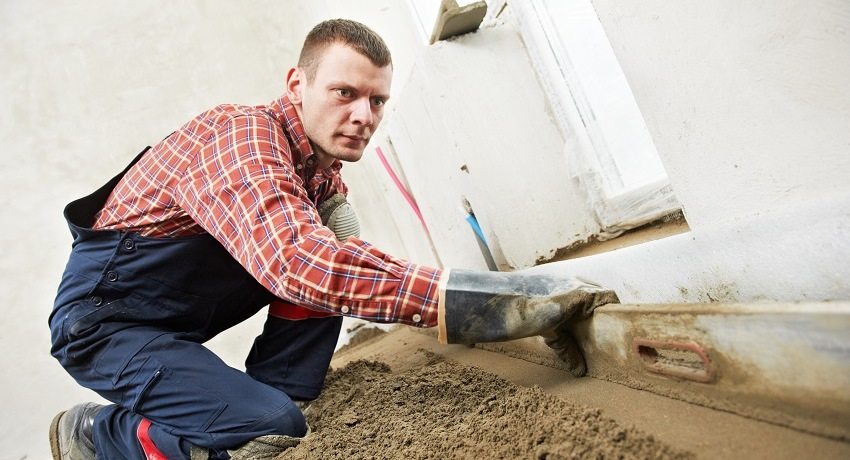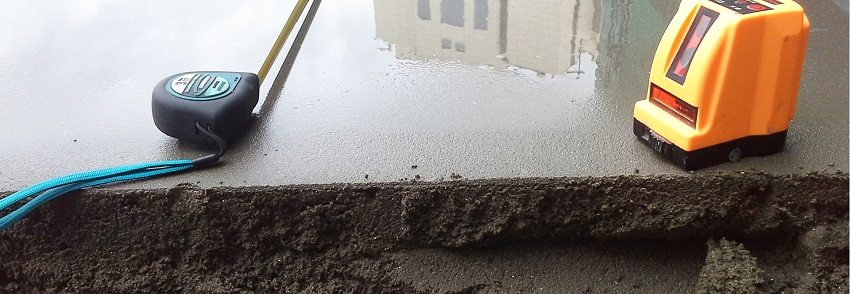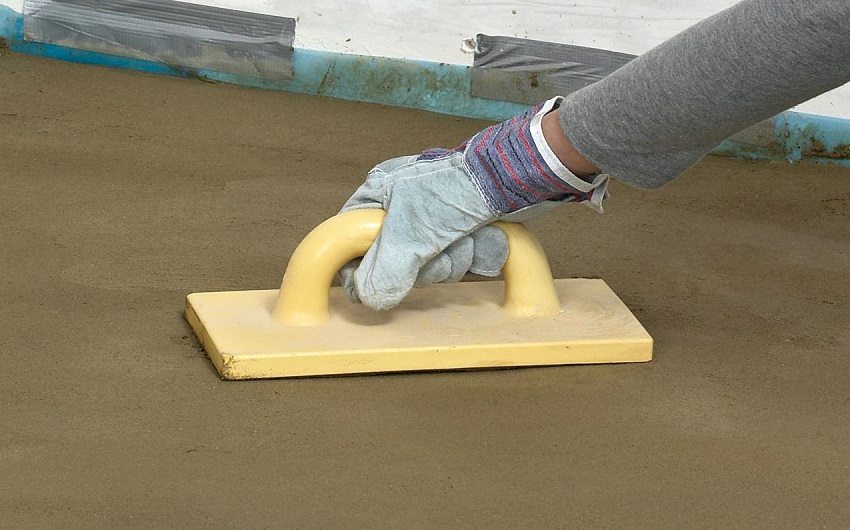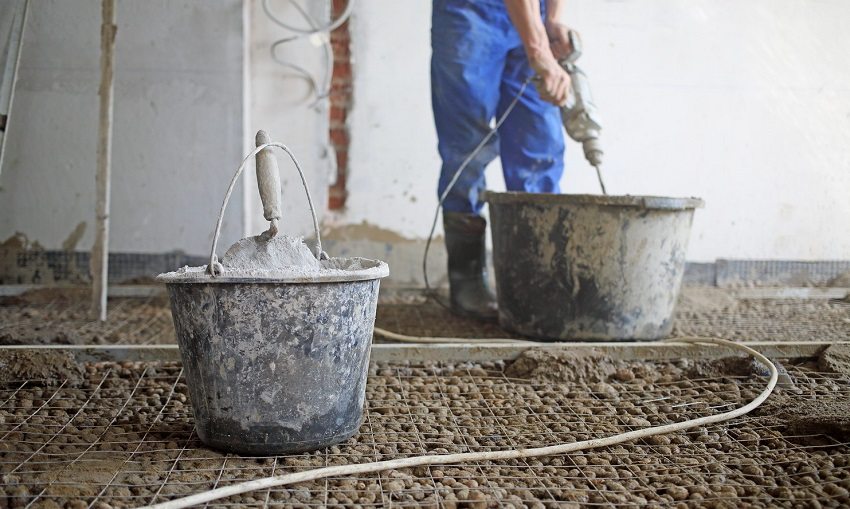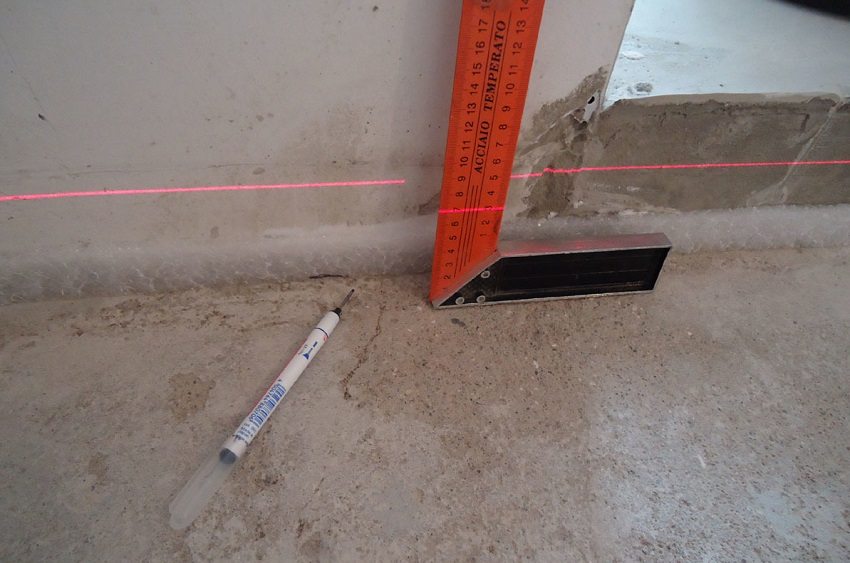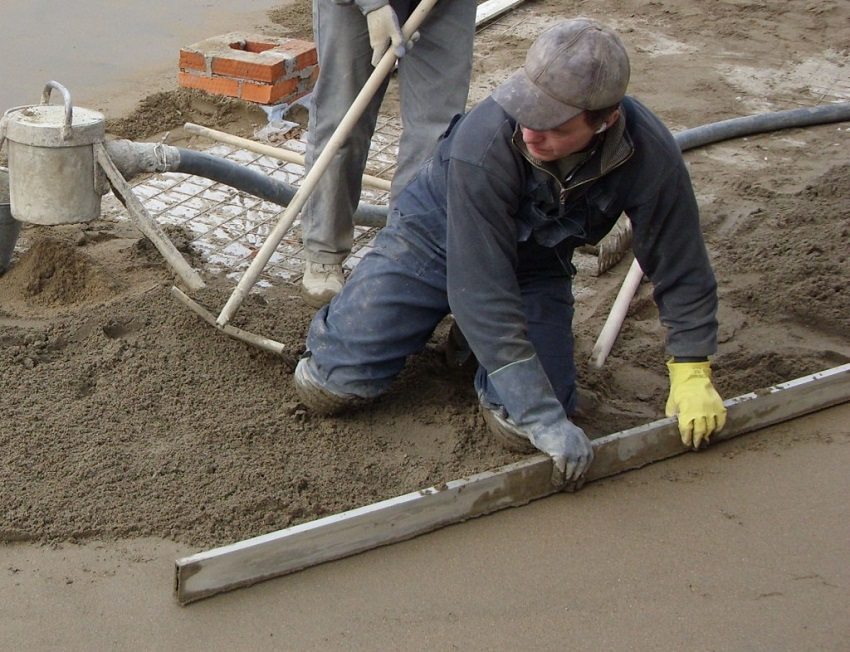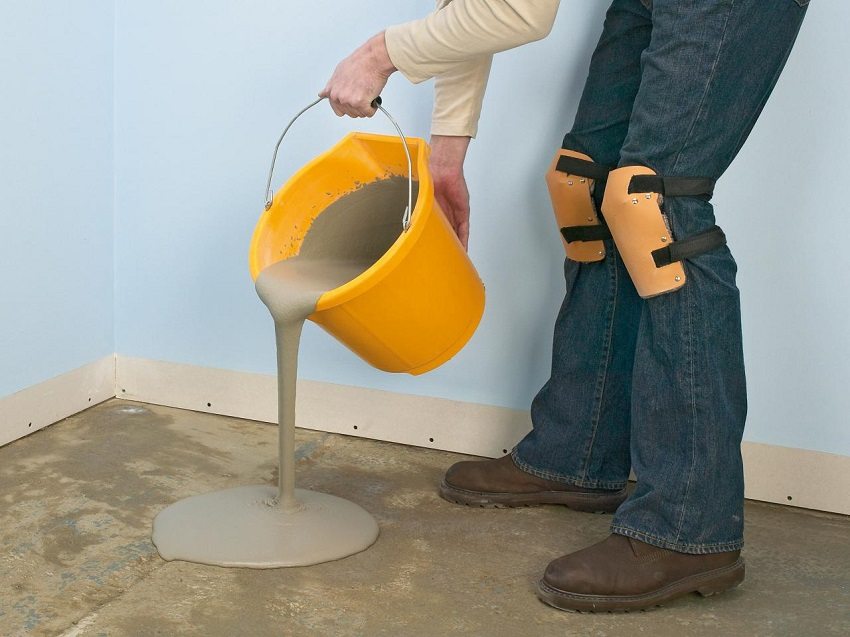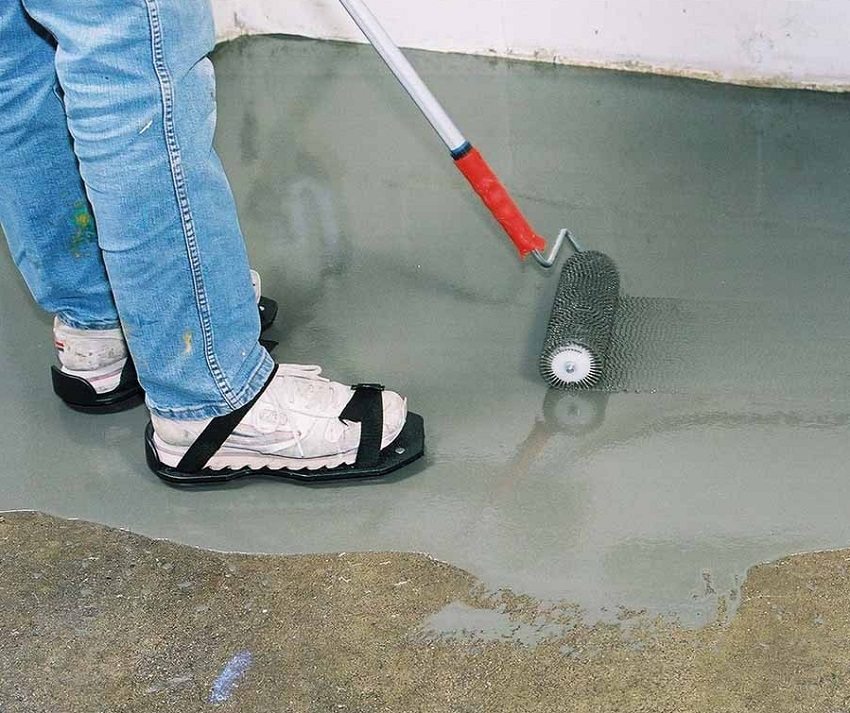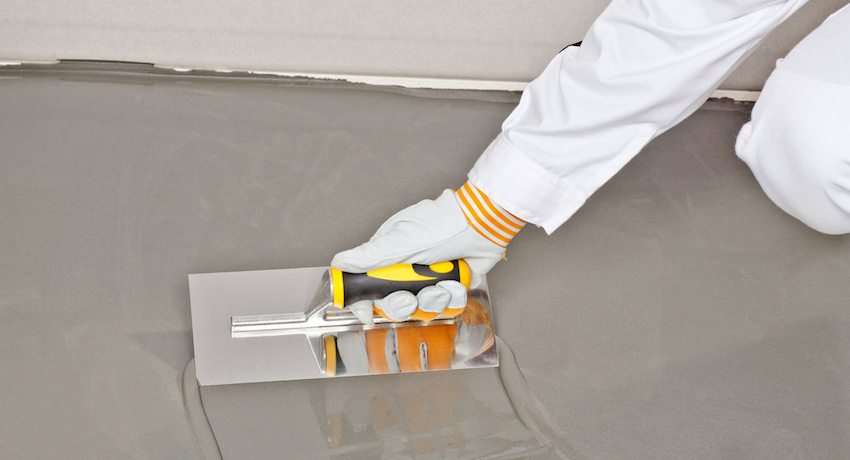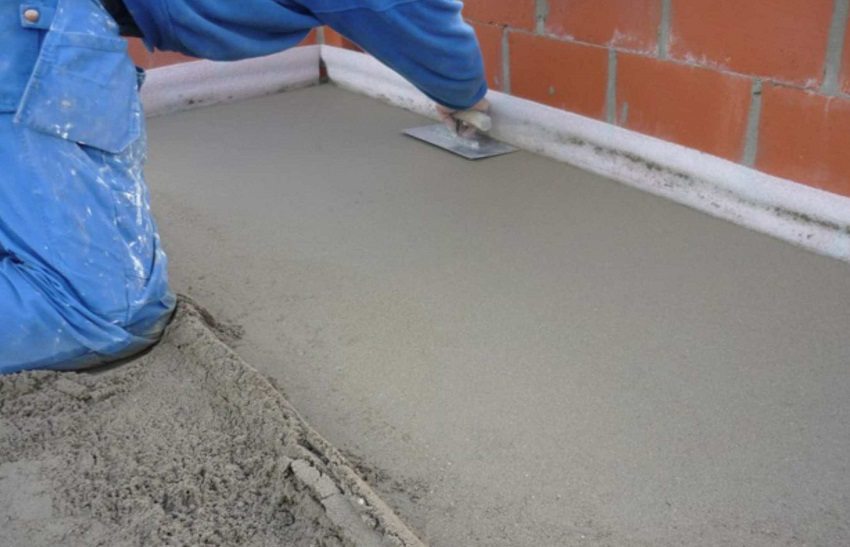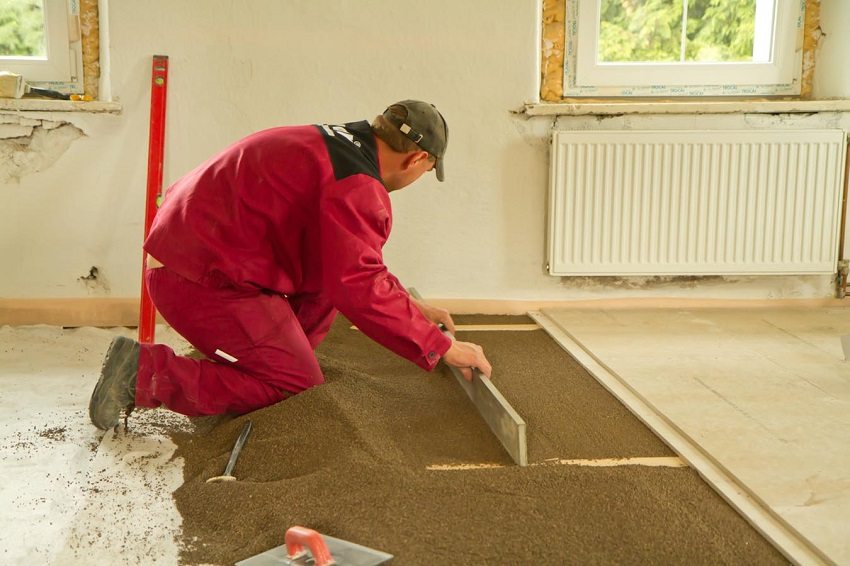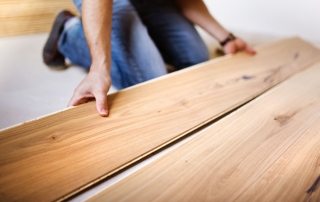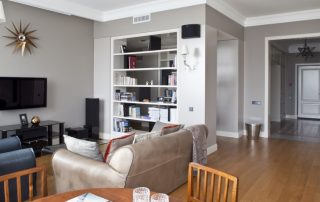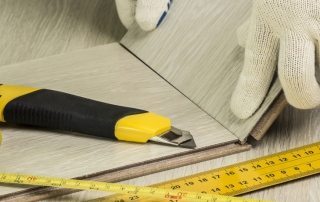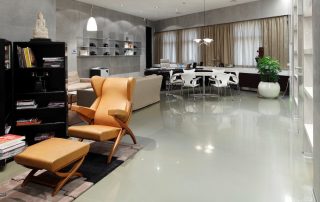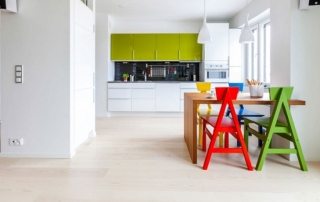In order to floor in the apartment or the house was even, strictly horizontal and did not creak underfoot when walking, it is necessary to correctly and competently perform its screed. This term refers to the leveling layer located between the base of the floor and the finishing coat. What are the methods of its device? Floor screed: how to do it right? Answers to these questions are necessary for every owner engaged in repairs on their own.
Content [Hide]
Floor screed: how to do it using different methods
Screed is an important stage in construction and renovation work. Finishing and finishing manipulations are carried out only after its installation, since the screed performs the most important functions:
- creation of an absolutely flat base for floor covering;
- strengthening of building structures;
- improving the thermal insulation of the room;
- improving sound insulation properties;
- equalization of loads on the interfloor overlap.
Before making a floor screed, it is necessary to determine which of its available types is most suitable in this situation:
- classic concrete;
- self-leveling;
- dry;
- semi-dry.
Each of these types has a different laying technology and involves the use of different materials.
Classic concrete
Refers to wet appearance. During the production of work, a large amount of water is used, which makes it necessary to provide for waterproofing of floors before starting work. To complete all stages, you will need tools: laser, hydraulic or conventional levels, a tape measure, a spatula or trowel, as a rule, a knife, beacons, a drill with a nozzle for stirring the solution.
Preparatory work includes the following stages: dismantling of the old coating and screed residues, cleaning and degreasing of floor slabs, grouting and filling of defects and cracks on the base of the floor, waterproofing with hermetically sealed holes near utility pipes.
Of the materials you will need: Portland cement, sand, water and, preferably, a plasticizer. The mortar is prepared at the rate of one part of cement to 4 parts of sand. In places where it is planned to put large furniture, the amount of sand is reduced to 3 parts. The mixture is diluted with water to the required consistency, after which a plasticizing additive is added to it. Stirring can be done in any available way, but it is most convenient to do this with a drill with a nozzle in a suitable container.Since the materials are the most affordable, the lowest price per meter of floor screed is obtained. You can do the work yourself, which will save your budget even more. Moreover, this is not so difficult to do.
First, beacons are installed on the prepared base every meter parallel to each other. At this stage, you need to use a level. Then, the resulting niches are filled with a solution to the height of the lighthouses. For convenience, this is done through one niche. With a trowel and a rule, the solution is leveled along the upper edge of the guide beacons. After the screed is completely filled, it must be periodically moistened with water so that the cement does not crack. When it will be possible to walk freely on the surface, it is necessary to wipe the existing irregularities until a completely smooth surface is obtained. Complete hardening occurs after 28-30 days.
Helpful advice! RScreed installation in one room must be completely completed within one day, in order to avoid deformation and destruction of the cement monolith along the border that would otherwise have happened.
Self-leveling screed
It is produced in a "wet" way, like the previous one. However, making it much easier and faster. The whole secret is that the role of the solution is played by a special mixture, in which, in addition to cement and sand, there are chemical additives that give the solution plasticity and fluidity. Due to these properties, the poured solution under the influence of gravity itself spreads throughout the room, filling all cracks and niches with itself.
The mixture is supplied dry and diluted with water according to the attached instructions. Then the solution is thoroughly mixed and poured without using beacons until the topmost point in the base relief disappears under its surface. In this case, it is advisable to use level or laser level... The thickness is adjusted using a roller or a special brush. The advantages of this type of screed:
- quick drying - a person can walk on it after 10 hours;
- no need to install beacons;
- less laboriousness of the whole process;
- obtaining a perfectly smooth surface that practically does not require additional processing;
- due to the fact that the layer is of the smallest thickness, the weight of the screed is low, which reduces the load on the floors.
The only drawback of this type is the very high price per meter of floor screed. The work on its device may not cost anything if you do it yourself.
Helpful advice! While the self-leveling screed is drying, it must not be allowed to be exposed to direct sunlight. She is also afraid of temperature changes, drafts and getting wet. If these requirements are met, a very hard, weakly absorbing surface will be obtained.
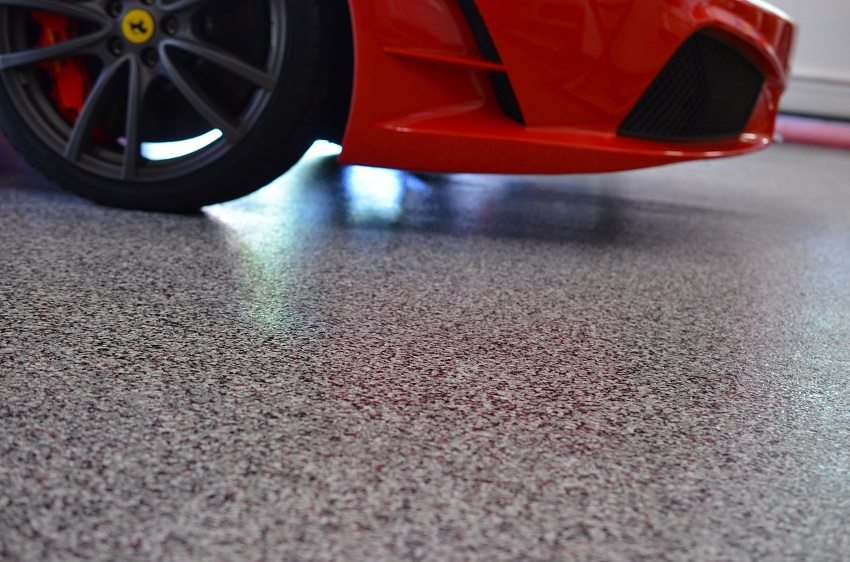
Modern self-leveling screeds with polymer fillers create a very durable flooring and do not require additional processing
The price of a semi-dry floor screed is less than a wet one
Mix for semi-dry screed cook with less water. The solution turns out to be plastic, but not fluid. This circumstance allows you to save on the waterproofing device. All materials are the same: cement, sand and water. Only the latter is 30% less. The only thing to add to this set is polypropylene fibers for reinforcement. The entire laying technology is similar to how a "wet" screed is made, only in this case, the solution is not poured out, but covered. This method saves time, since the semi-dry mixture hardens faster. The benefits include:
- no possibility of fluid leakage through the floors;
- fast drying;
- very smooth surface due to the possibility of using a trowel;
- the fibers used reduce the weight of the screed.
Thanks to savings on waterproofing, as well as the timing of the work, the price of a semi-dry floor screed is noticeably lower than when it is installed in the traditional way.
Related article:
|
Among the disadvantages, it can be noted that such a thick solution can only be mixed in a concrete mixer. In addition, it is difficult to determine the required amount of water, since there are no specific instructions on this score, everything is done "by eye".
Helpful advice! After laying the screed with a semi-dry method, it must be tamped very well. Otherwise, it can crack and start to crumble.
What does a dry floor screed look like in the video?
When we see a dry floor screed in the video with our own hands, it seems that everything is done very simply. In fact, this is not the case. A dry screed involves a rather complex process of leveling and installing a structure made of logs and sheet materials. Using a level, logs are installed on the base, to which sheets of plywood, chipboard or other similar materials are attached with screws. But this is already the last century.
The modern dry screed is a completely different, simpler and more convenient method. Its essence lies in the fact that aluminum beacons for drywall are installed on the base of the floor using a level. Falls asleep between them dry expanded clay crumb... It is very lightweight and does not put a lot of stress on the floors. Then, using the rule, the expanded clay is leveled flush with the beacons. After all this, ready-made sheets of gypsum fiber are fixed to the lighthouses. They are very durable and can withstand heavy loads.
This type of screed has a number of advantages:
- there is no need to thoroughly prepare the base;
- high speed of construction and no need to wait for drying;
- wet processes are completely excluded;
- small mass of the entire structure;
- the ability to hide utilities and wires.
Disadvantages in this type of screed have not yet been found, except for the rather high price of materials.
Helpful advice! If it is planned to lay soft materials (linoleum, carpet or PVC tiles) on a dry screed as a finishing coating, then the seams between the sheets of gypsum fiber must be rubbed with putty.
When choosing any of the screed device methods, it is necessary to follow the established rules that have been developed by the builders.
